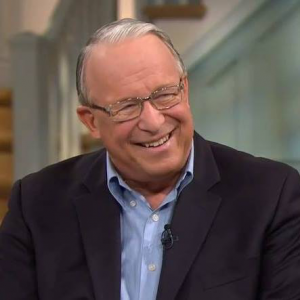“Never abandon yourselves to despair, for we are the
Easter people and hallelujah is our song.”
It can be interesting to think about what a religious historian one hundred years from now might write about our own time. What would the perspective of history say about the trends of today? What follows is a small attempt to capture a bit of that future history. It has not yet been written, but perhaps someday it could be. So use your imagination when you read what follows.
An excerpt from John Arthur Hargerston, History of the North American Church in the Early 21st Century (Nashville: Century 22 Publishing, 2134), s.v. “Easter People.”
The Easter People. “Easter People” has been used to describe one of three influential orientations common among evangelicals in the early 21st century. The other two are “Power People” and “Fortress People.”
Power People. The “Power People” movement developed among evangelicals who were determined to oppose erosion of what they believed was a cultural consensus from the 19th century that incorporated Christian moral principles. Power People understood themselves as an embattled minority fighting to preserve decency, family values, and godly government. They worked to mobilize public outrage, lobby politicians, and pass new laws. Many took on roles as political activists and power brokers. The Power People movement ultimately failed as the surrounding culture counter-moblized, bringing to bear on the issues greater social leverage than the Christian minority could muster. A secondary factor in the movement’s failure was that growing numbers of evangelicals became disillusioned with political battles as a strategy for carrying out the mission of the church. Over time the Power People communities withered as members departed to merge either into the secular culture where power-oriented strategies were more accepted or into one of the other main evangelical movements of the time.
Fortress People. A second group of evangelicals are now referred to as the “Fortress People.” The Fortress People, deeply concerned about what they saw as an endemic decline of moral standards, retreated from the larger culture, attempting to “wall off” their church communities from unhealthy outside influences. Most historians today consider the Fortress People orientation to be a significant cause of the tragic retreat from external Christian mission that developed in those years. The fortress communities discovered thata within the context of a heavily networked communications society it was impossible to construct the necessary social firewalls. John R. W. Stott, an evangelical of considerable stature during that era, observed that throughout the history of the church an active orientation to evangelism was always a key factor in “fanning the flames of Christian growth.” Consequently, the Fortress People’s retreat from evangelistic engagement lead also to a steadily declining commitment to spiritual development. In the end the surrounding culture’s ills invaded the Fortress People’s lifestyles with virtually equal effect as in the broader society. Fortress People communities were marginalized, isolated, and today remain only as isolated enclaves sometimes visited for their quaint cultural practices that provide a glimpse into life in the last century.
Easter People. The more effective evangelical movements of the early 21st century are today often named after a phrase spoken by Pope John Paul II in the closing years of the 20th century. “Do not abandon yourselves to despair,” he told a group in 1979, “for we are the Easter people and hallelujah is our song.” The Easter People were not less concerned about the moral decline they saw all around them, but they adopted a different attitude toward it. Easter People believed that the cultural situation constituted a unique and divinely appointed moment of opportunity, and they developed confidence in skill in reaching out to the surrounding culture. This “Easter Orientation” was rooted in a deep faith in the power of God and the resurrection of Jesus Christ. The Easter perspective stimulated a faith orientation that ruled out the drive toward power of the Power People and overcame the fears of the Fortress People. As a result Easter People adopted an unusually bold confidence in the power of God to transform individuals and even entire communities.
Assessment of the Easter People Movement. Although it took almost 75 years, the effectiveness of the Easter People strategy was eventually rewarded when in 2076 massive waves of spiritual renewal and social transformation spread outward from the boldly witnessing Easter People communities. What is today called “The Easter Orientation” eventually swept across great swaths of society in the North American democracies. Elsewhere in the world it worked with astonishing power to transform the great mega-societies that emerged in Asia and the global south. The spiritual vitality of the worldwide Christian church today clearly owes an enormous debt to the faith of the Easter People of the early 21st century who pressed ahead confidently during those otherwise spiritually bleak years.

I was going to correctly cite your Easter people quote 🙂
It was Blessed John Paul II